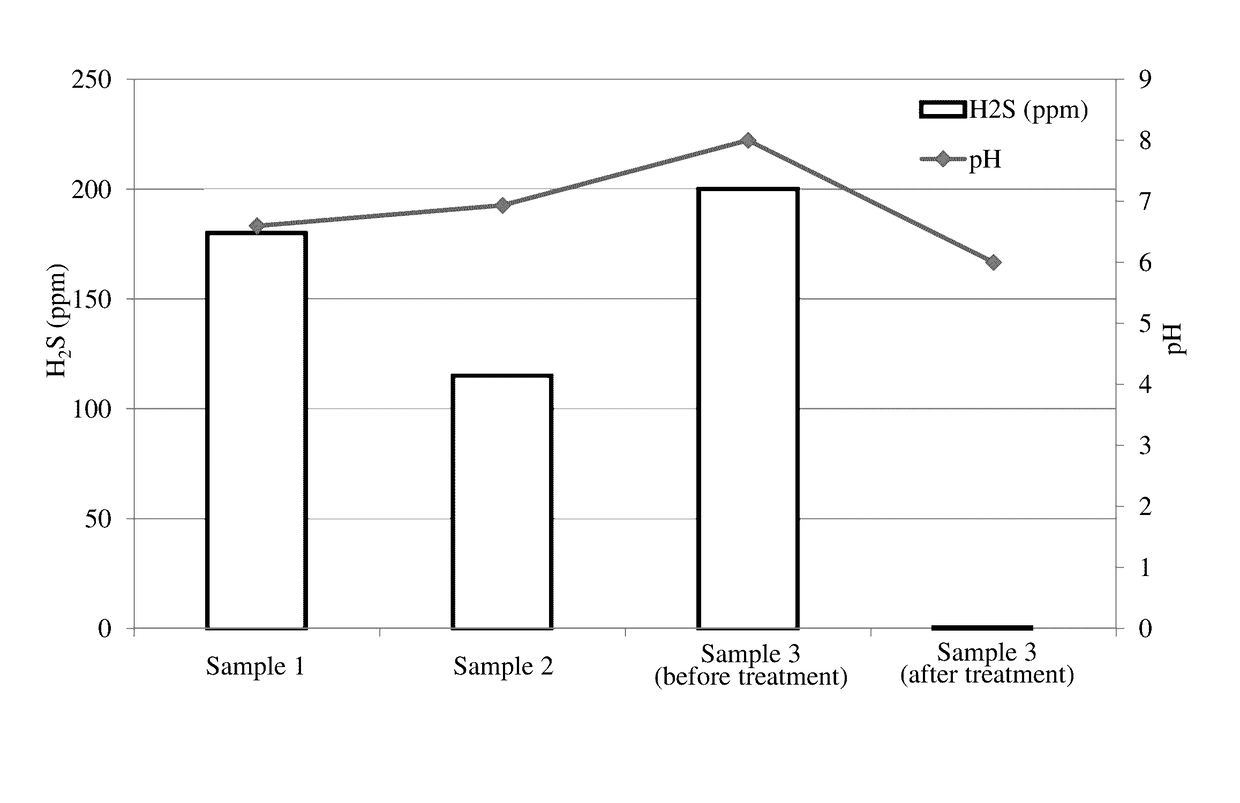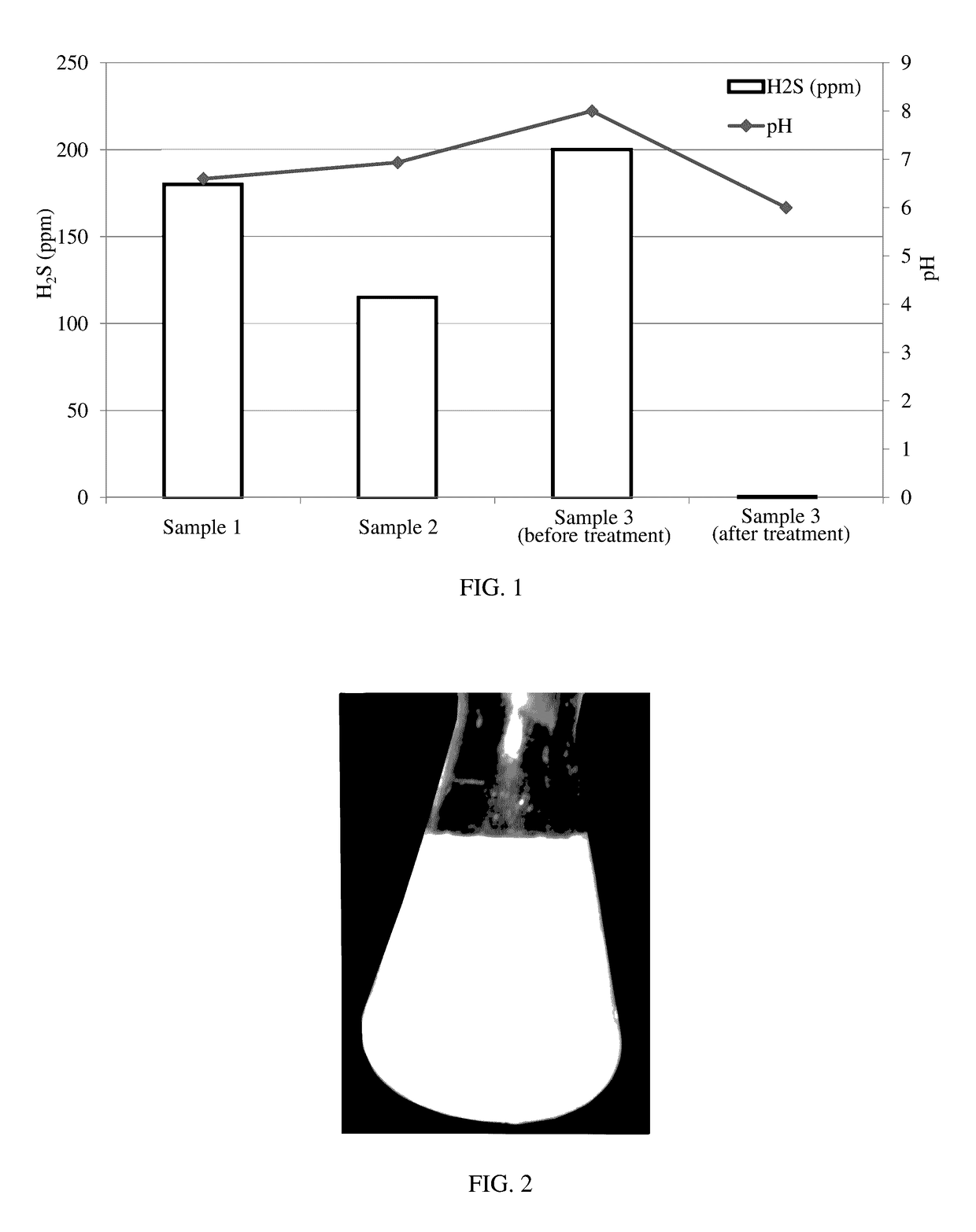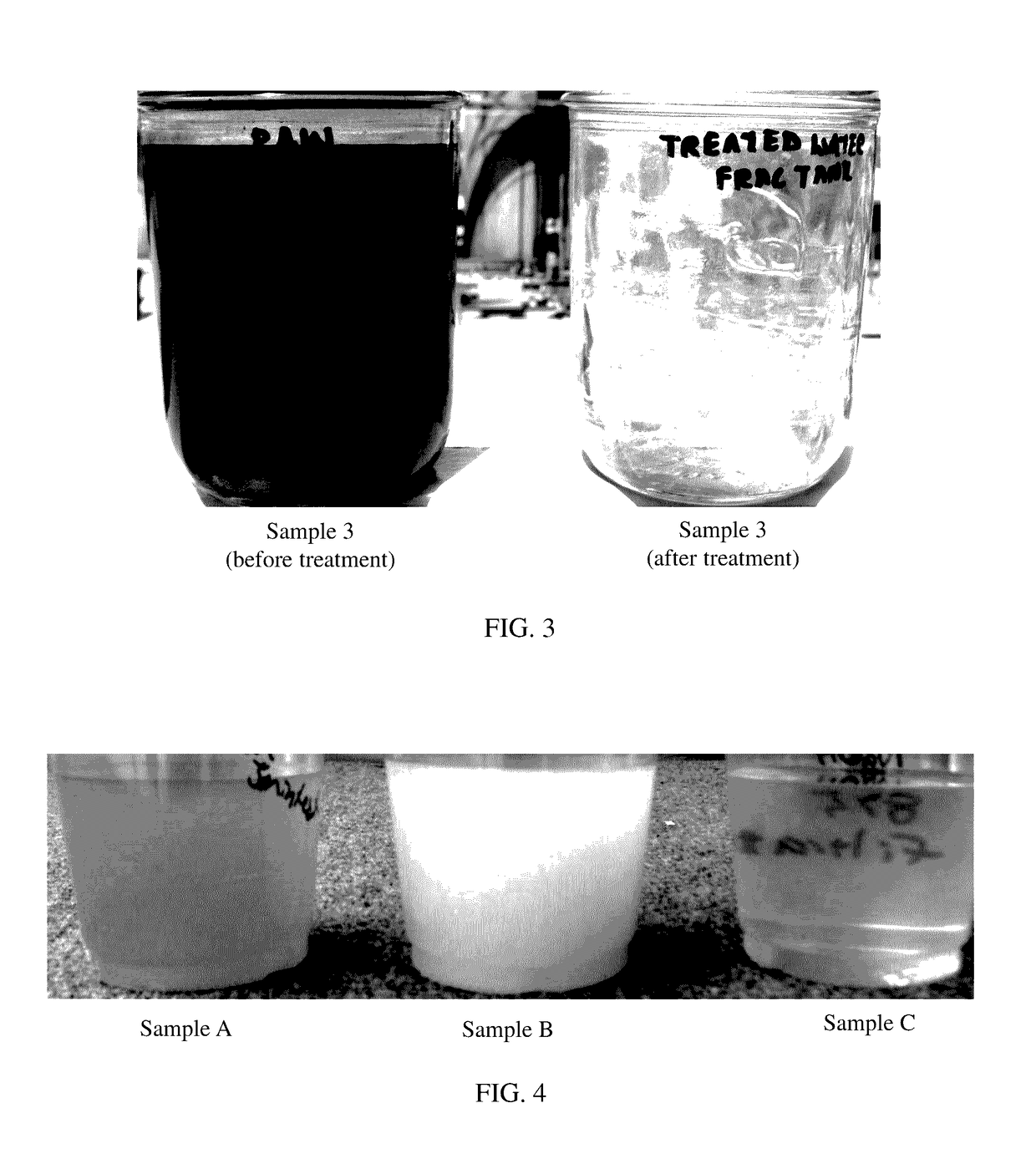Composition and method for treating oilfield water
a technology for oilfield water and composition, applied in water/sewage treatment by oxidation, quary waste water treatment, borehole/well accessories, etc., can solve the problems of water treatment cost and time-consuming, hard water ions accumulate, and achieve the effect of reducing sulfid
- Summary
- Abstract
- Description
- Claims
- Application Information
AI Technical Summary
Benefits of technology
Problems solved by technology
Method used
Image
Examples
example 1
emoval from Water Samples
[0099]Three samples of water containing various amounts of hydrogen sulfide were acquired. Sample 1, Sample 2, and Sample 3 were produced water from an oil well located in the United States. An aliquot of Sample 1, Sample 2, and Sample 3 was collected and subjected to chemical analysis to determine the amount of hydrogen sulfide present in the sample. The results appear as bars in FIG. 1, which shows the amount of hydrogen sulfide in ppm for Samples 1, 2, and 3 (before treatment). The pH of Samples 1, 2, and 3 also is shown in FIG. 1.
[0100]Thereafter, 350 ppm of chlorine dioxide was added to Sample 3. A colloidal precipitate of sulfur was formed as shown in FIG. 2. Sample 3 had a high degree of turbidity upon formation of the colloidal precipitate.
[0101]Since Sample 3 had the greatest amount of hydrogen sulfide at 200 ppm, it was used to test the efficacy of sulfide oxidation. Addition of 350 ppm of chlorine dioxide and 50 ppm of ferric sulfate caused oxidat...
example 2
n of Produced Water to Fracturing Fluid
[0104]Produced water was acquired from a well. At room temperature, chlorine dioxide and ferric sulfate were added to the produced water to achieve 350 ppm chlorine dioxide and 50 ppm ferric sulfate in the produced water. The initial amount of hydrogen sulfide in the produced water was 200 ppm. Although the produced water was initially black and opaque similar to that of Sample 3 before treatment in FIG. 3, addition of the chlorine dioxide and ferric sulfate eliminated the sulfide from the produced water. After the produced water was treated to remove the hydrogen sulfide, Alpha 114 biocide and FRW-20 polymer were added to the treated water to prepare a fracturing fluid. FIG. 5 shows the hydration for this slick water fracturing fluid. FANN 35 was used with an R1 spring and a B1 bob at 500 rpm to generate the curve. A Comparison of the treated water with varying loading of the friction reducer with the tap water shows that the fluid hydrates we...
PUM
| Property | Measurement | Unit |
|---|---|---|
| density | aaaaa | aaaaa |
| mass concentration | aaaaa | aaaaa |
| mass concentration | aaaaa | aaaaa |
Abstract
Description
Claims
Application Information
 Login to View More
Login to View More - R&D
- Intellectual Property
- Life Sciences
- Materials
- Tech Scout
- Unparalleled Data Quality
- Higher Quality Content
- 60% Fewer Hallucinations
Browse by: Latest US Patents, China's latest patents, Technical Efficacy Thesaurus, Application Domain, Technology Topic, Popular Technical Reports.
© 2025 PatSnap. All rights reserved.Legal|Privacy policy|Modern Slavery Act Transparency Statement|Sitemap|About US| Contact US: help@patsnap.com



